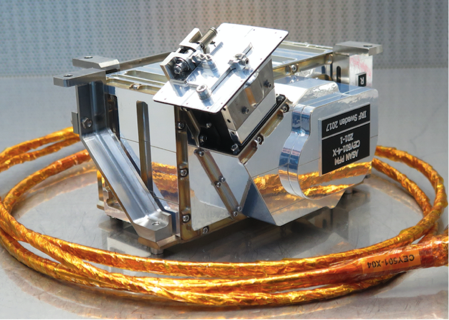Sputtering of the lunar surface by solar wind: New data directly from the lunar surface
- 1Swedish Institute of Space Physics, Kiruna, Sweden (wieser@irf.se)
- 2National Space Science Center, Chinese Academy of Sciences, Beijing, China
- 3University of Chinese Academy of Sciences, Beijing, China
Solar wind precipitating onto the lunar surface results in the emission of energetic neutral atoms from the surface [1,2]. Emitted energetic neutral atoms consist of neutralized and backscattered solar wind protons and of sputtered surface materials. The sputtered population is a source population for the tenuous lunar exosphere and, given sufficient energy, escapes directly to space. Other mechanisms like photon stimulated desorption and micrometeoroid impact vaporization provide likely larger fluxes to the exosphere, but solar wind sputtering results in higher particle energies, which are easier accessible for measurements. The Advanced Small Analyzer for Neutrals (ASAN) is one of the payloads onboard of the Yutu-2 rover of the Chinese Chang'E-4 mission to the far-side of moon. The ASAN instrument (Figure 1) is an 8th generation instrument of the SWIM family [3,4]. ASAN measures energetic neutral atoms in an energy range from 10eV to 10keV with an energy resolution dE/E between 16% and 100% depending on species and energy. The mass resolution of ASAN is sufficient to separate hydrogen, oxygen and two heavy mass groups Si-group and Fe-group, named after the center mass in the group. The field of view of ASAN is a single angular pixel pointing to the lunar surface. The mobility of the rover allows investigating pristine lunar regolith, undisturbed by the landers retro rockets, at different locations. The instrument has been successfully operating for more than 3.5 years on the lunar surface since the landing of Chang'E-4 on 3rd January 2019. A wide range of solar wind conditions and observation geometries could be covered. We present mass resolved average energy spectra of sputtered energetic neutral atom fluxes from the lunar surface and compare the result with a semi-empirical model of the interaction. Mass resolved energy spectra reveal clearly two different populations of energetic neutral atoms, backscattered solar wind and sputtered surface particles. The energy spectra can be explained by a simple scattering model where impinging solar wind protons either are a) reflected through a single binary collision with a surface atom or b) undergo a two stage process where the impinging solar wind proton is backscattered from deeper atomic layer and then transfers its momentum to an atom on the surface in a binary collision resulting in the emission of a (sputtered) surface atom. In the energy range of concern these two mechanisms are sufficient to describe the observed mass dependent energy spectra. Total particle fluxes obtained by this model serve as a first estimation of the flux provided to the lunar exosphere through solar wind sputtering.

Figure 1: The ASAN instrument was built and is operated in collaboration between the Swedish Institute of Space Physics (IRF) and the National Space Science Center (NSSC), Chinese Academy of Sciences (CAS).
[1] Wieser, M. et al.: Extremely high reflection of solar wind protons as neutral hydrogen atoms from regolith in space. Planetary and Space Science, 57(14-15):2132 – 2134, 2009.
[2] McComas, D.J, et al.: Lunar backscatter and neutraliza- tion of the solar wind: First observations of neutral atoms from the moon. Geophys. Res. Lett., 36(12), 06 2009..
[3] Wieser, M. and Barabash, S.: A family for miniature, easily reconfigurable particle sensors for space plasma measurements. Journal of Geophysical Research: Space Physics, 121(12):11,588–11,604, 2016.
[4] Wieser, M., S. Barabash, X. D. Wang, A. Grigoriev, A. Zhang, C. Wang, and W. Wang. The Advanced Small Analyzer for Neutrals (ASAN) on the Chang’E-4 Rover Yutu-2. Space Science Reviews, 216(4):73, 2020.
How to cite: Wieser, M., Barabash, S., Wang, X.-D., Zhang, A., Wang, C., and Wang, W.: Sputtering of the lunar surface by solar wind: New data directly from the lunar surface, Europlanet Science Congress 2022, Granada, Spain, 18–23 Sep 2022, EPSC2022-444, https://doi.org/10.5194/epsc2022-444, 2022.

